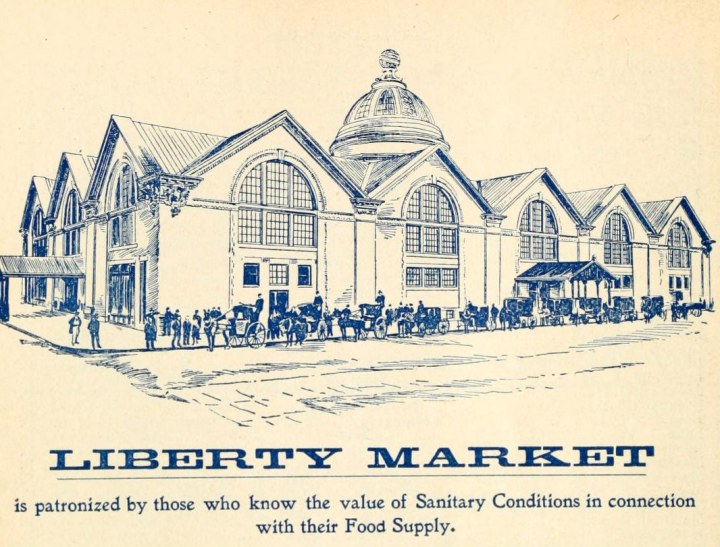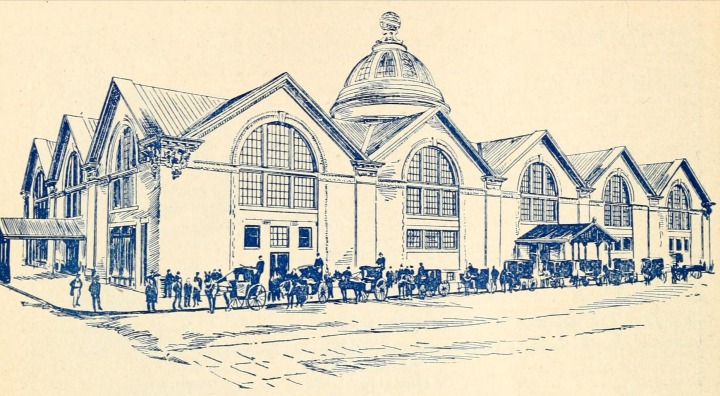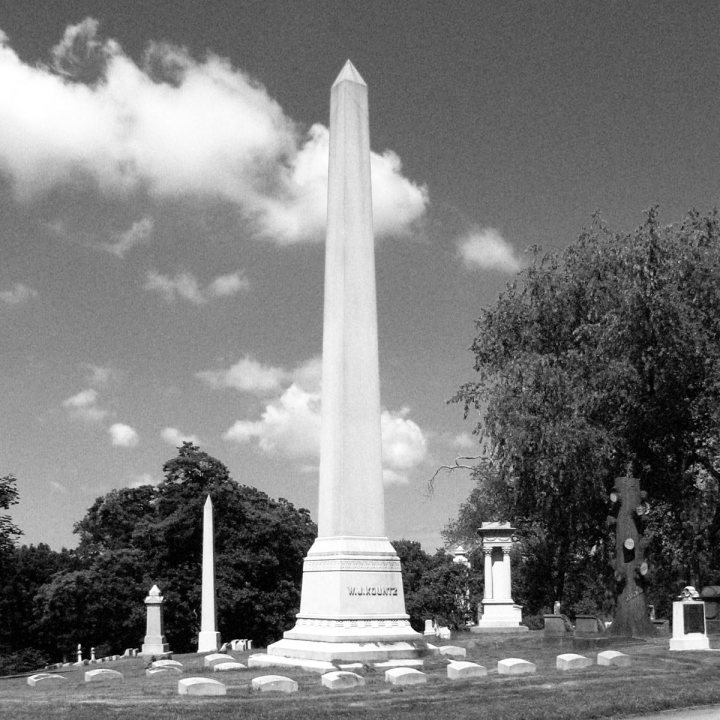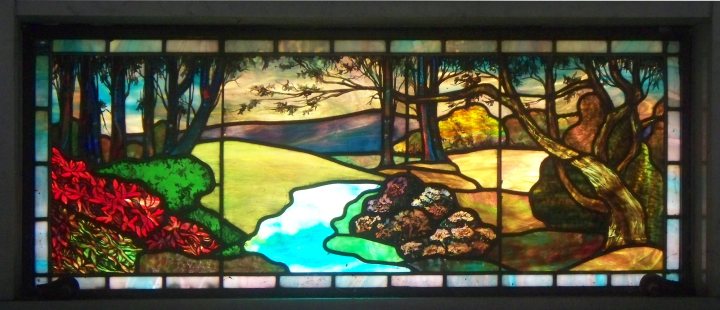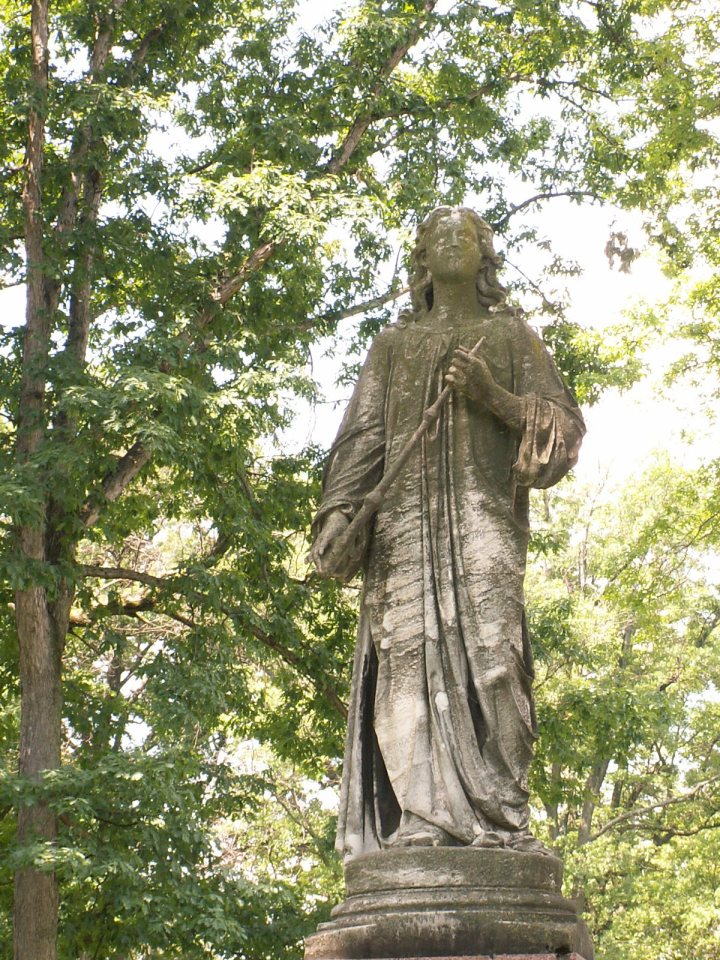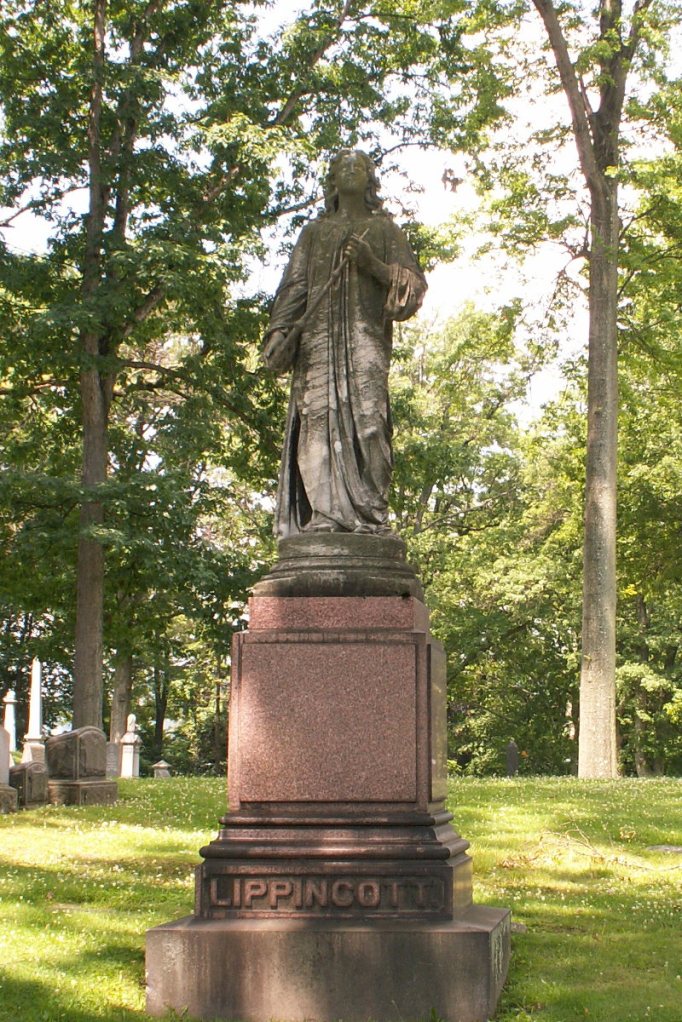From the Pittsburgh and Allegheny Blue Book, 1899-1900. This building is now the William Pitt Student Union, having been absorbed, like much of the rest of Oakland, into the University of Pittsburgh.
-
Hotel Schenley
-
Liberty Market
From the Pittsburgh and Allegheny Blue Book, 1899-1900. The Liberty Market was brand new when this ad ran. It failed as a retail market, but soon began a long association with the automobile industry that left it with the name Motor Square Garden. In 1988 it was redeveloped as a shopping arcade; once again, it failed as a retail space, and now it is known to most Pittsburghers as the headquarters of the local AAA affiliate. The building, currently having some restoration work done, looks almost exactly the same now as it did in 1900.
For those who wish to appreciate the details of the carriage trade lining up in front of the building, old Pa Pitt has provided an enlargement of the picture from the advertisement (click on it to make it very much bigger).
-
James Scott Negley Monument in Allegheny Cemetery—with an Announcement

General James Scott Negley was an important figure in the Union Army, but perhaps his greatest claim to undying memory is that his sister married Thomas Mellon, guaranteeing that the Negleys would be intertwined with the richest family on earth. This picture has been donated to Wikimedia Commons under a Creative Commons CC0 1.0 Universal Public Domain Dedication, so no permission is needed to use it for any purpose whatsoever.
And now, an announcement. It cannot have escaped regular readers that old Pa Pitt loves to wander through cemeteries with a camera. The reason is simple: our best cemeteries are great outdoor art museums filled with imperishable masterpieces of architecture and sculpture, and great thought was put into laying them out in a picturesque manner.
Lest his readers begin to suspect, however, that he has a morbid obsession with death, Father Pitt has decided to create a separate site devoted to nothing but Pittsburgh cemeteries. There you will find many of the cemetery pictures that have been published here, and new pictures as well that have never been seen anywhere else. Occasional cemetery pictures will still appear here, but Father Pitt’s main site will perhaps maintain a healthier balance between life and death now that he is free to take as many cemetery pictures as he wants without worrying that he seems too morose.
-
Hostetter’s Celebrated Stomach Bitters
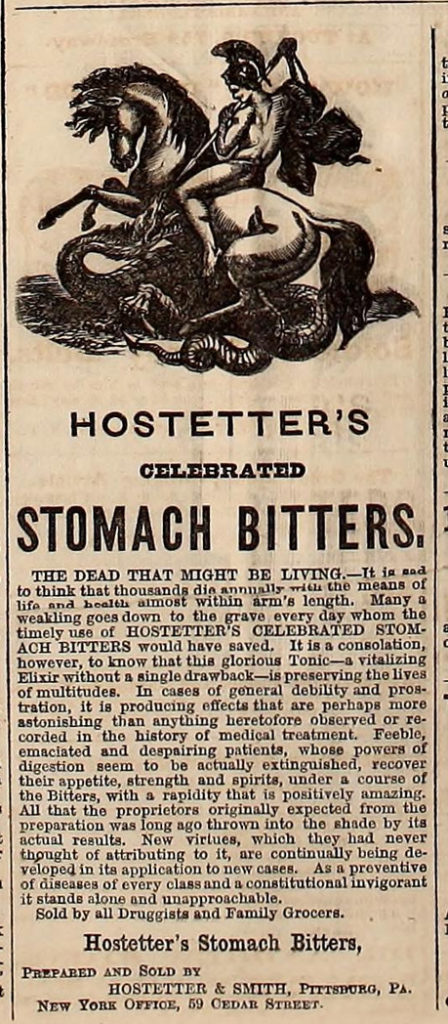
Patent medicines were an important industry in Pittsburgh a century and a half ago. This advertisement appeared in Frank Leslie’s Illustrated Newspaper, August 13, 1864.
-
W. J. Kountz Obelisk, Allegheny Cemetery
-
Stained Glass in the Grierson Mausoleum, Allegheny Cemetery
-
Graver Monument in Allegheny Cemetery
-
Daniel O’Neill Monument, Allegheny Cemetery
Mr. Daniel O’Neill was editor of the Dispatch, which he built into Pittsburgh’s most respectable newspaper, a position it maintained until it fell victim to the great newspaper massacre of 1923, when spiraling paper costs forced countless newspapers across the country out of business. It seems that a newspaperman’s work is quite literally never done: this statue of Mr. O’Neill hard at work still looks as fresh as it did when it was put up in 1877. Note the Egyptian-style lotus-blossom pedestal that supports his desk.
-
South Side Flats
-
Mary L. Lippincott Monument in Allegheny Cemetery


